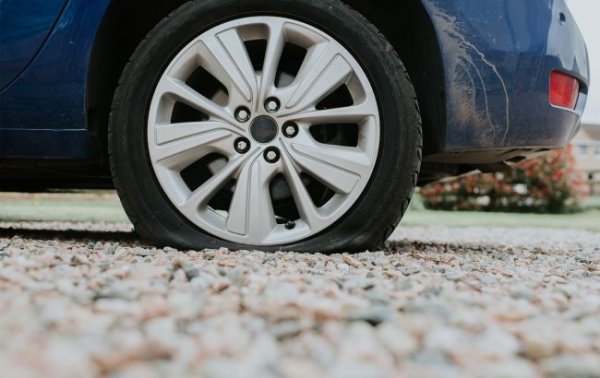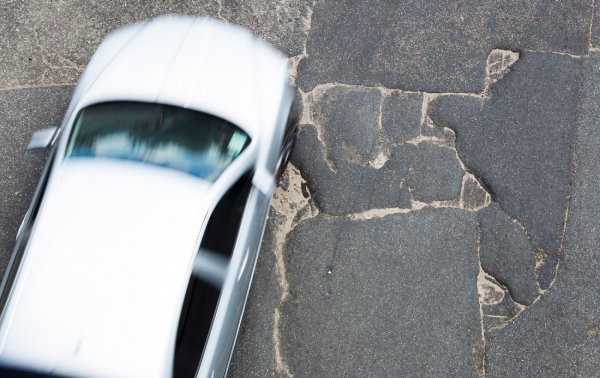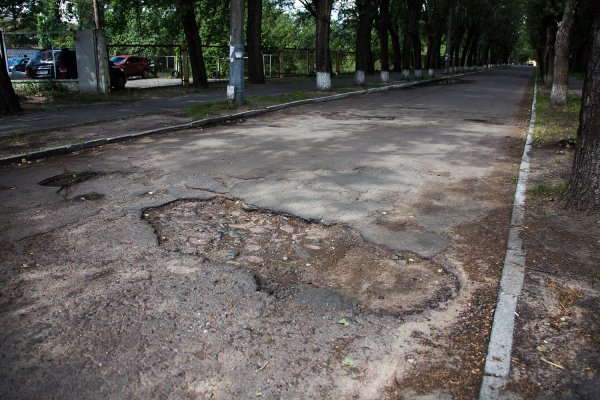
Photo: The car hit a pothole in the road (Getty Images) Author: Konstantin Shirokun
Traditionally, after winter, our roads show many additional flaws in the form of deep potholes. What should a driver do if he missed a hole and the car got a noticeable shake?
Read about the consequences of careless driving on bad roads in the RBC-Ukraine article.
Road surface defects are probably worth creating a separate classification system for, but we will only say that any hole in the asphalt more than 3-5 cm deep can be dangerous for a car. The damage to the car depends on the size of its wheels, weight and the speed at which it was moving when it hit the pothole. A lot also depends on the driver's actions. Actually, we will talk about all this.
Why You Should Be Afraid of Potholes in the Road
The damage a car receives when it comes into contact with a pothole – or rather, with its rough edges – is varied. The most likely of these are a cut tire, a deformed wheel rim, bent suspension parts, dented or destroyed engine and transmission pans.
The real danger of such accidents is not that it will be impossible to continue the trip, but that the driver may try to continue driving the car with damage. And they can deepen at any moment and lead to an accident. That is why experienced auto mechanics advise to check the car after a hard contact with a pothole or asphalt waves.

After a strong impact of the wheel on a pothole:
Slow down, but do not brake abruptly. Turn on the hazard lights and stop in a safe place;
As you move towards the stopping point, take a closer look at the steering wheel – is the car responding to it adequately, has it turned relative to its usual “straight ahead” position;
With the engine running, look at what the instruments and information screens show – are there any emergency messages there. What could be unpleasant: a drop in engine oil pressure, engine overheating, loss of battery charge and other electrical problems. Since some of these problems may make themselves known later, it is worth returning to the instruments in a few minutes – for example, after the chassis has been checked.
Inspect both wheels on the side where the pothole was hit. There is a high probability of damage to one or both tires and rims, and you should also examine the inner side of the wheel. If the damage to the wheel (tire or rim) is small, the pressure in it will drop slowly and the wheel will deflate to zero in your presence;
If you are not sure that the impact was only with one wheel, look under the front bumper, under the engine and the front axle. Sometimes the car hits a high asphalt bump or a stone with the engine and gearbox sump, the lower arm of the front suspension, exhaust elements. Fresh scratches on the metal along with asphalt residue on it will accurately indicate the place where there was contact with the road.

Exotic cases
It is also worth knowing about less common consequences of a hard encounter between wheels and potholes and asphalt waves. For example, it happens that after such a blow the engine suddenly stops. This may be a consequence of the automatic activation of the switch, which, according to passive safety requirements, should stop the fuel pump in the event of an accident. To return the pump to an active state, you will need to look for a special button or call the hotline of your car dealer.
In an older car, after a hard impact on a pothole, one or another contact in the electrical equipment may disappear. Most often, something “comes off” in the distribution box or fuse box. That is, when after a jolt on a good pothole, some electrical device in the car stops, move the fuses and relays in the “black box”. And make an appointment with an electrician at your favorite service station.
In brief
When you want to have more guarantees that you will reach your destination on a bad road without incidents, you can do something for your car – so that it can withstand such a test with dignity. Inflate the tires by 0.5 – 0.7 atmospheres, put a second spare tire in the trunk, set the driver's seat to the maximum height. And tune in to the fact that the most effective assistant on a bumpy road for you will be a restrained driving style and low speed. Which will reduce the consequences of wheel impacts on potholes, and most importantly – will allow you to see these obstacles in advance and react to them correctly.
Materials from Autocentre and Motor were used in preparing this article .
Let us recall that RBC-Ukraine recently reported why pedestrians are not always right.
